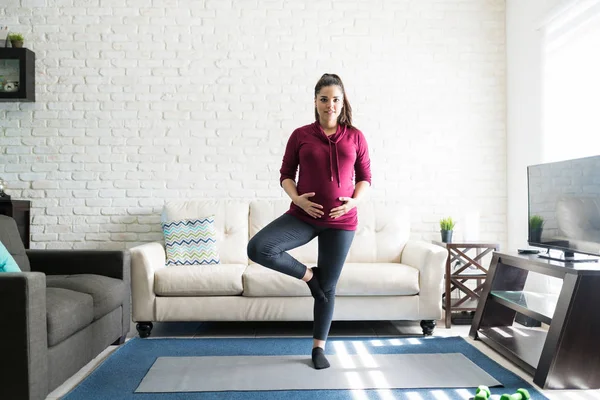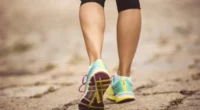As the years pass, maintaining physical balance becomes less of a fitness goal and more of a health necessity. Poor balance is not just a coordination issue—it’s one of the leading predictors of falls, hospitalizations, and loss of independence in older adults. According to the Centers for Disease Control and Prevention (CDC), over 36 million falls are reported among older adults each year in the U.S., resulting in 3 million emergency visits and over 32,000 deaths.
What’s more concerning? Balance issues often creep in unnoticed. You might feel steady walking down the street but suddenly find it hard to stay upright while putting on pants or reaching for a top-shelf item. That’s where the 30-second one-leg balance test, popularly known as the “Flamingo test,” comes into play—it’s a quick, evidence-based way to assess your functional aging without stepping into a clinic.

How to Do the One-Leg Balance Test Correctly (The Flamingo Test)
You don’t need any equipment or a gym to take this test—just a stopwatch and a bit of space. Here’s how to perform the Flamingo Balance Test accurately:
Stand barefoot on a flat surface.
Place your hands on your hips.
Lift one foot off the ground, bending the knee to 90 degrees.
Start timing the moment the foot lifts.
Stop the timer if:
You shift your supporting foot.
You place your raised foot down.
Your arms leave your hips.
You lose balance in any way.
Try it on both legs. If you wobble or fall short of the time benchmarks, it’s a sign worth paying attention to. This isn’t a pass-or-fail exercise—it’s a snapshot of how well your brain and body are coordinating.
Ideal Balance Times by Age: What’s Normal for Your Decade?
How long should you be able to balance on one leg? Studies published in the British Journal of Sports Medicine suggest clear benchmarks by age. Here’s what the data shows for expected one-leg balance durations:
| Age Group | Average Balance Time (Seconds) |
|---|---|
| 18–39 | 43–45 seconds |
| 40–49 | 40–42 seconds |
| 50–59 | 37–40 seconds |
| 60–69 | 22–30 seconds |
| 70+ | 8–20 seconds |
Anecdotally, many healthy older adults are surprised when they attempt this test and barely last 5 seconds. It’s not about athleticism—it’s about neuromuscular health, proprioception, and core stability.
Can You Improve Your Balance With Practice? The Science Says Yes
If your results are below average, don’t panic—balance is a skill you can rebuild. Just like muscle strength or memory, your sense of equilibrium responds well to consistent training. Research from the Harvard Medical School confirms that even older adults in their 80s and 90s can significantly improve balance with as little as 15 minutes of focused activity daily.
Balance training helps strengthen:
The core muscles
Ankles and lower legs
Brain-body coordination
Inner ear (vestibular system)
Visual-motor connection
Unlike cardiovascular fitness, balance benefits can show up within 1–2 weeks of consistent effort. One man in his late 60s regained over 20 seconds of balance time in just three weeks after daily 30-second sessions. His only “equipment” was his living room and a commitment to not let age define his capabilities.
Quick Balance Tips: Improve in Just 30 Seconds a Day
Improving balance doesn’t mean you need to enroll in a yoga studio or hire a personal trainer. Small, daily tweaks can make a significant difference. Here’s how to enhance your balance in just 30 seconds a day:
Stand on one leg while brushing your teeth.
Perform heel-to-toe walks across the room.
Do single-leg calf raises near a wall.
Close your eyes and try standing on one leg—advanced, but powerful.
Shift weight from side to side slowly and intentionally.
Add a layer of mindfulness to each exercise—focusing on posture, breathing, and control. These mini-challenges engage your neuromuscular system far more than passive standing or seated exercises.
What the One-Leg Balance Test Says About Longevity and Health
Here’s the kicker: this simple test doesn’t just indicate coordination—it’s linked to overall mortality risk. A 2022 study in the British Journal of Sports Medicine followed over 1,700 adults aged 51–75 and found that those who could not hold the one-leg stance for 10 seconds had an 84% higher risk of all-cause mortality over the next 7 years.
Why? Because poor balance reflects deficits in muscle mass, brain function, reflexes, and sensory feedback—all of which are vital to long-term survival. It’s a barometer for how well your systems are functioning together.
Final Thoughts: Small Tests, Big Insights into Aging Gracefully
The 30-second one-leg balance test is deceptively simple but reveals so much about how your body is handling the demands of aging. It’s not about athletic competition—it’s about prolonging independence, reducing fall risks, and staying sharp, steady, and strong through every decade of life.
Whether you’re in your 40s and feeling fine or in your 70s and worried about stability, incorporating short balance drills into your routine can yield transformative results. Stand up, time yourself, and let your body tell you where you stand—literally.
Also Read | 7 Proven Knee Pain Relief Tips Doctors Swear By










